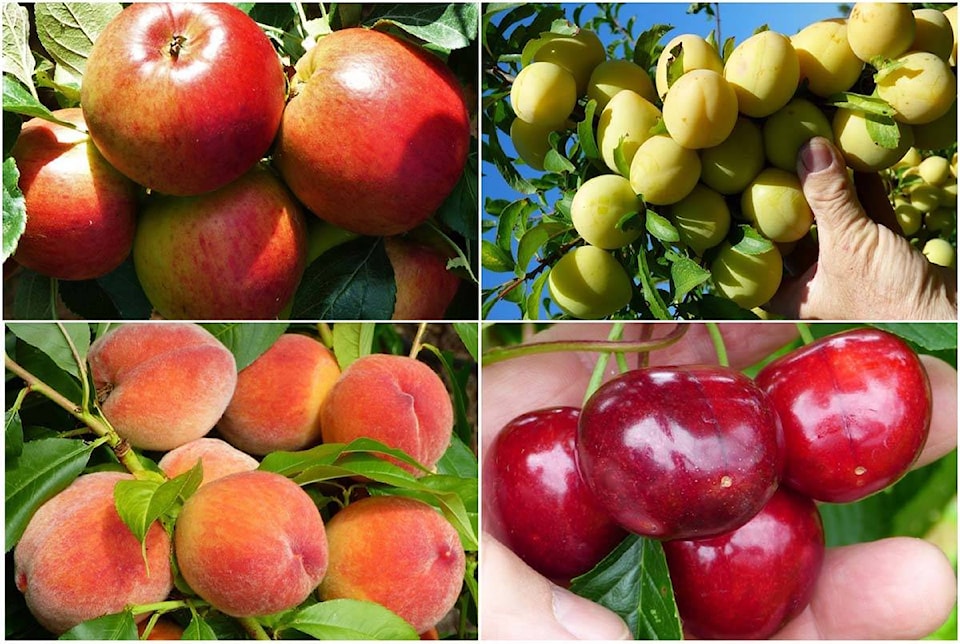I often get asked if fall is the best time to plant fruit trees, and, in my opinion, it is.
The only problem being that the wholesale growers are geared around a spring shipping season, so by the time autumn comes around, the selection has dwindled.
However, many garden centres still have a great choice of your favourite apples, pears, plums and peaches, most of which were potted-up in spring and are well rooted by now.
When shopping for the ideal specimen, look for a tree with a relatively straight stem, a single leader, and at least some new growth. Don’t be too concerned about a little leaf curl or marginal browning, as these are the symptoms of the temporary imbalance between a large crown and small root system.
The other important thing to remember is that many fruit trees aren’t self-fertile, meaning they need the pollen from a different variety in order to produce. I came across this problem just the other day when I noticed a couple with a ‘Rainier’ cherry on their cart.
When I mentioned that it would need a cross-pollinator, they were disappointed because they only had room to plant one tree. So we went back to the racks and found a ‘Stella’ cherry, which is reliably self-fruitful, and they went home with that.
It should also be noted that even self-fertile fruit trees benefit from cross-pollination, producing larger individual fruits and overall crops.
I’ve also noticed that customers love to purchase trees with fruit already on them, which is quite common with apples and Asian pears. However, getting them home intact is nearly impossible as the fruit inevitably drops, or worse, branches are broken. So take the fruit off before transporting the tree.
Once you get home, you are going to have to choose a site with good soil drainage and at least six hours of direct summer sun – any compromise with either one of these requirements will only result in limited fruit production.
Your planting hole should be twice as wide as the pot and about the same depth. While it’s okay to break up the soil below, digging an excessively deep hole usually results in the root flare sinking below ground level.
The other thing to remember here is that the grafting union is usually a few inches above ground and should not be buried, as our wet winters will cause the bark to rot, eventually killing the tree.
Ideally, you should have somewhat fertile soil, if not try adding some compost or Sea Soil as an amendment to the backfill.
The only other additive you might need is a handful of bone meal in the hole prior to planting, as this provides phosphorus for root growth and should be applied where the roots can grow through it.
Both plastic and fiber pots should be removed even though the latter is often marketed as being biodegradable – it takes too long to break down and hinders root growth.
Once the pot is off, if the roots look fibrous and not woody, then plant it as is. However, large woody roots that can be seen swirling around the outside of the root ball should be lightly teased out to prevent future girdling.
Last but not least is staking, and if you think the tree will get through winter without shifting, then none is needed. But in any case, stakes should be in place for no more than six to eight months.
Water your newly planted tree right away and with any luck, Mother Nature will keep things moist.
Mike Lascelle is a local nursery
manager and gardening author
(hebe_acer@hotmail.com).
